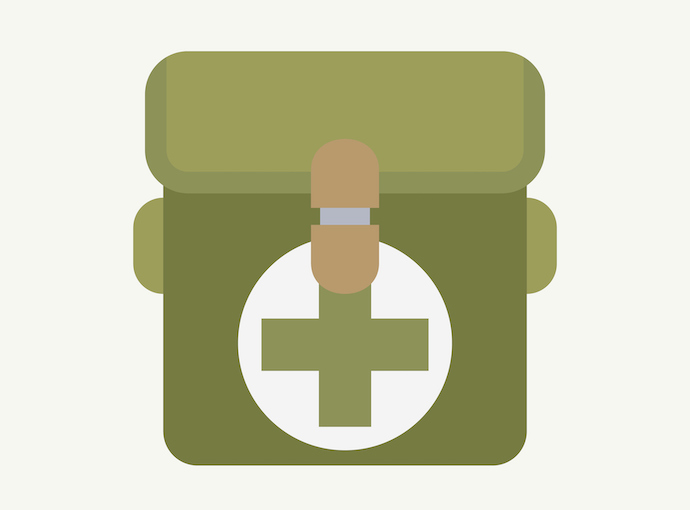GAO: New DOD Health Plan Fails to Improve Patient Satisfaction
Patient satisfaction still hovers around 68 percent for TRICARE health plans and access to mental healthcare providers for new TRICARE patients is more difficult.

Source: Getty Images
- The reformed Department of Defense health plan is not improving patient satisfaction, according to the Government Accountability Office (GAO).
GAO found that a year after establishing TRICARE Select—a plan that offers coverage for civilian provider networks as opposed to solely military provider networks—TRICARE still gets an 80 percent positive rating for TRICARE health care and a 68 percent positive score for the TRICARE health plans.
Access to care through specialty providers became more challenging. Problems in accessing specialty providers increased from 18 percent to 24 percent.
In primary care, patients’ access to care as soon as it was needed actually dropped two percentage points from the 2017-2018 year to 2019. However, this drop was not considered statistically significant.
Furthermore, implementation of TRICARE Select did not change the probability of civilian providers accepting new TRICARE patients. Almost seven in ten providers (67 percent) overall accepted new TRICARE patients, if they were accepting patients during TRICARE Select’s first year after the transition.
More specifically, less than five in 10 mental health care providers and around nine in ten primary care and specialty care providers accepted new TRICARE patients.
None of these statistics were far off from the 2017 and 2018 results before TRICARE Select was fully in effect, with one exception.
The difference in the number of mental healthcare providers taking on new TRICARE patients dropped significantly in comparison to pre-TRICARE Select implementation. Now the percentage of mental healthcare providers accepting new TRICARE patients is 84 percent, but that is a seven-percentage point decrease from 2017 and 2018.
Even the reasons for providers refusing to provide coverage went largely unchanged, except for two.
Fewer providers stated that reimbursement was their reason for not accepting TRICARE patients, dropping from 11 percent down to 8 percent.
In contrast, four percent more providers said the physician was unavailable or too busy.
Still, the inconvenience of working with TRICARE remained at the top of the list of reasons why providers did not accept TRICARE patients, with 10 percent of providers responding that this was the main barrier to taking on TRICARE patients.
The government provides the military with its own managed care plan, known as TRICARE Prime, and used to provide two non-Prime commercial plans with civilian provider networks, TRICARE Standard and Extra.
“Effective January 1, 2018, these two options were eliminated and TRICARE Select was implemented,” the GAO summarized. “TRICARE Select has similar benefits for provider choice and obtaining care from civilian providers as TRICARE Standard and Extra.”
The difference is that TRICARE Select has access standards, GAO explained. These standards ensure that around 85 percent of enrollees are covered by TRICARE’s civilian provider network.
A 2018 study found significant discontent among patients covered by TRICARE. Among the reasons for their discontent was high healthcare costs.
Healthcare affordability drove treatment or medication adherence down from 94 percent to 85 percent, almost 10 percentage points lower.
Results varied based on the patient’s health plan. If the patient was a member of TRICARE for Life—a Medicare supplement—she was more likely to be satisfied with her plan than members of TRICARE Prime or Select.
TRICARE has seen some significant conflicts in the past two years regarding a restrictive enrollment period and a major billing malfunction.
The restrictive enrollment period implemented along with TRICARE Select means that patients cannot change from TRICARE Select to a different health plan mid-year outside of the enrollment period.
While this may not seem drastically different from the way an average health plan operates between open enrollment seasons, for military families it can pose a problem. The inability to switch plans mid-year may mean that a TRICARE member cannot choose a new healthcare facility if their physicians are called to active duty elsewhere, a military news outlet reported. Changes in physicians’ duty status happen and are typically unpredictable.
Another military healthcare provider and payer—the Veterans Health Administration (VHA)—made changes that are now seeing positive results.
Despite being in poorer health conditions and having a low income, VHA members were less likely than non-VHA members to abandon medication adherence for cost-related reasons. This is a significant stride in the right direction, as those outside the VHA plan are struggling to afford their prescriptions.
While the military’s patient satisfaction ratings may not be abominable, they demonstrate that the new health plan is not serving its intended purpose, at least not yet.
